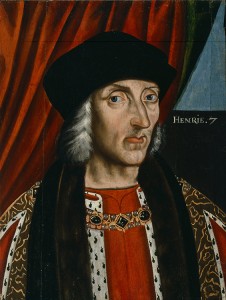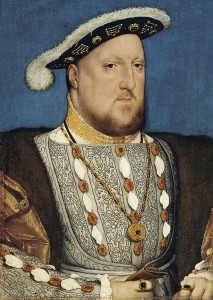England’s House of Tudor
January 28, 2019
Today, January 28, is a big day in the history of the House of Tudor, the family that ruled England from 1485 to 1603. On Jan. 28, 1457, 562 years ago, Henry Tudor, the earl of Richmond, was born in Pembroke, Wales. He became King Henry VII in 1485, beginning the Tudor dynasty. His son grew up to become Henry VIII, perhaps the most famous king in English history. Henry VIII died in London 472 years ago on Jan. 28, 1547.

Henry VII became king in 1485, beginning the Tudor dynasty. Credit: Henry VII (Before 1626), oil on oak panel from the British School; Dulwich Picture Gallery (London)
Henry VII won his crown at the battle of Bosworth Field, defeating Richard III (of the House of York) and ensuring a victory for his own side (the House of Lancaster) in the Wars of the Roses. Henry claimed the throne through his mother, Margaret Beaufort, a descendant of Edward III. He restored order to England after 30 years of repeated outbreaks of civil war.

Henry VIII, the second Tudor king, ruled England from 1509 to 1547. Credit: Portrait of Henry VIII of England (1536), oil on panel by Hans Holbein the Younger; Thyssen-Bornemisza Museum (Madrid)
His son Henry VIII continued Henry VII’s work of unifying the country. Henry VIII broke all ties between England and the Roman Catholic Church and made the monarch head of the Church of England. Henry VIII was succeeded first by his son Edward VI and then in turn by his daughters, Mary I and Elizabeth I. The reigns of the Protestant Edward and the Catholic Mary were short and unhappy due to civil unrest, foreign wars, severe economic problems, and religious disturbances. But under Elizabeth, who was Protestant but pursued a moderate religious course, England became a major European power. After Elizabeth’s death in 1603, the crown passed to King James VI of Scotland, the great-grandson of Henry VII’s oldest daughter, Margaret. He took the throne as James I, England’s first Stuart king, ending the Tudor dynasty.


